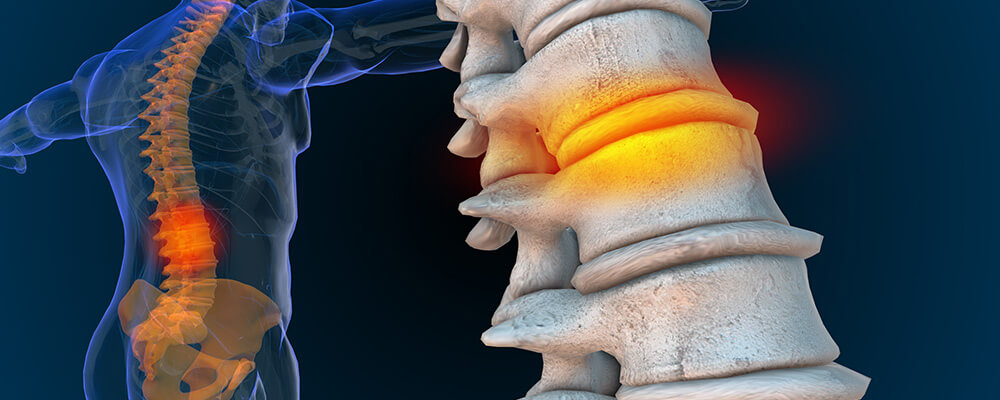What Spine Vertebrae Correspond to Different Areas of Pain?
March 23, 2022 | Brain and Spine Specialists

The spine is a fascinating part of the human anatomy that is made up of many intricate parts working together to support the core of a torso. In total, there are seven cervical vertebrae, twelve thoracic vertebrae, five lumbar vertebrae, and one sacral vertebra, also known as the sacrum. Through the bones passes what is known as the spinal cord, which are the nerves that carry messages between the brain and the rest of the body.
Vertebrae and Localized Pain
Most people know that the lower back is a common place to experience pain, but did you know there is usually a specific spinal vertebra associated with different areas of pain? In fact, every area of the body has its own corresponding vertebrae. For example, C1 vertebrae can cause pain in the head, while L4 vertebrae are primarily associated with lower back pain.
Headaches and C1
The first cervical vertebra, or C1, is the smallest and most delicate of the cervical vertebrae. Sometimes referred to as the Atlas vertebra, it is also the most important because it connects the skull to the spine and supports the head, allowing for movement. Irritation of this vertebra can be the culprit causing pain in the upper neck and headaches. More severe damage to the C1 can cause serious problems such as paralysis.
Neck Pain and C2
Often referred to as the Axis vertebra, the C2 is responsible for the rotational movement of the head. Though not as delicate as the Atlas vertebrae, the C2 vertebrae can be easily damaged by car accidents, poor posture and even stress. If the C1 and C2 vertebrae become misaligned for any reason, the result could be mild to chronic upper and lower neck pain.
Upper Back Pain and T1-T5
Moving down the spine, the T1 vertebra is located at the top of your spinal cord and supports the head and neck. It is also responsible for protecting your brainstem. T1 is the first and uppermost of the 12 thoracic vertebrae and is also the smallest as it makes the transition from cervical to thoracic vertebrae. Pain experienced in the upper back or lower neck region could be due to damage affecting one or more of the T1-5 vertebrae.
Middle Back Pain and T6-T12
Below the T5 vertebra are T6-12 vertebrae, which are responsible for protecting the abdominal and back muscles. The protected nerves and muscles play an important role in balance and posture. Any damage to the T6-T12 vertebrae could result in moderate to severe pain in the middle back region.
Lower Back Pain and L3-L4
The L3-L4 vertebrae are positioned in the middle of the lumbar spine and are responsible for supporting the weight of the torso and protecting the nerves that descend from the spinal cord. The roots of the L3 spinal nerve exit the cauda equina through small openings on the left and right sides of the spinal canal and continue to some skin and muscles in the lower limbs. While it is less common to injure this spine segment, the L3-L4 vertebrae are subject to degeneration, trauma, and disc-related problems. Damage to these vertebrae and/or nerves can result in lower back, and sometimes limb pain.
Diagnosing Back and Neck Pain
Sometimes, diagnosing causes of pain can be accomplished by knowing which vertebrae and areas of the spine are linked to which areas of pain. Though an association can sometimes be identified, it is crucial to receive a professional medical examination to ensure a more serious condition isn’t the cause of your pain. Schedule a no-obligation consultation with our Brain and Spine specialists for a proper back and/or neck pain diagnosis so that we can develop a custom-tailored treatment plan best suited for your unique needs.
Categories:
